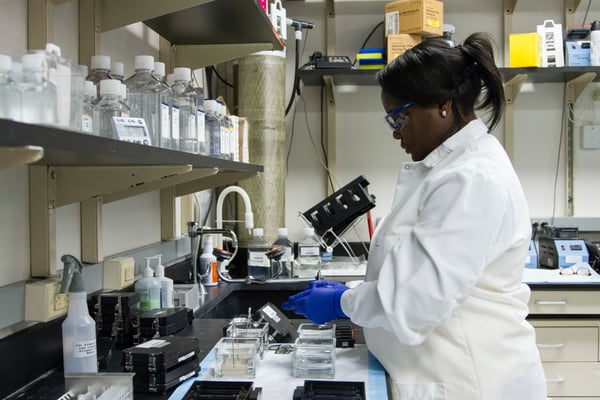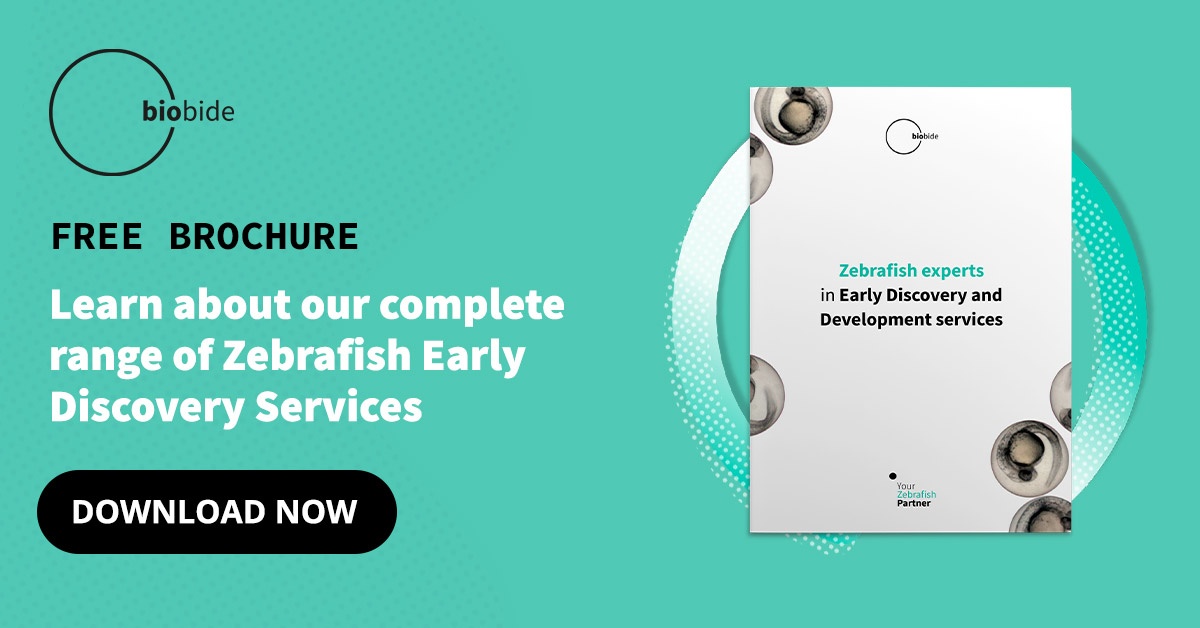The process of Drug Discovery is a complex issue that involves large amounts of testing and multiple validation tests to achieve drug efficacy, and eventually obtain drug approval in order to enter the market.
Current drug development research involves two fundamental types of screening: high-throughput screening and high-content screening.
In this article, you will learn about the differences between both screening techniques, the advantages of each of them, and why Zebrafish research has been so efficient for the development of the pharmaceutical industry.
High Throughput Screening
Known by its acronym HTS, High Throughput Screening involves a method of chemical experimentation in which millions of tests are applied to biomolecular pathways to identify compounds that impact them.
All this is possible thanks to advanced data processing systems, the use of robotics, and liquid handling devices. Expensive and well-equipped facilities with advanced technology are necessary for the development of these activities. Liquid handling technology is applied over multiple well plates which consist of 384 or 1536 wells per plate. Each drug is placed into one single well and the hundreds of plates generated are handled by robotic systems.These automated processes analyze large amounts of data coming from the pharmaceutical compound libraries in a short period of time.
High Content Screening
High Content Screening (HCS) involves the use of imaging and advanced automation to extract multi-parameter data describing phenotypic changes in biological systems. Cells are commonly used in HCS campaigns although more complex organisms such as zebrafish embryos can also be used as we'll see below. Variations in cell phenotype may include changes in cell morphology, protein production or protein deficiency, or changes in its visual appearance.
The main technique used in HCS is fluorescent labeling. Changes caused by the compounds at the molecular structure level will be subsequently visualized at the microscopic level.
HCS was originally developed as a more specific and complementary technology to HTS, but today it is considered the best approach to study cell function.
Compared to HTS, HCS offers the following advantages:
- More comprehensive information on samples (multiparametric information).
- Automated images generated by the full potential of modern microscopy allow generating quantitative analyses without bias.
- It can be applied to more relevant biological systems than those used in classical biochemical assays.
- It allows the readout of multiple endpoints for the same test compound.
- It yields data richer in information than those lacking image registration.
How are Zebrafish used in High Throughput Screening and High Content Screening?
Mammalian models are commonly used for in vivo testing, however these studies on mammals come at a considerable expense to the industry and pose important ethical issues within the research field. Zebrafish have opened up new possibilities and have radically changed common screening practices. The Zebrafish genome has been completely identified and due to their biological similarity to humans, they are used to test and predict the toxicity and efficacy of potential candidates in a HCS format..
The main reason for their ideal implementation is the high percentage of similarity in the genetic code, disease homologs, and organ structure with humans.
Some characteristics of this unique little fish are:
- They have external fertilization allowing a large generation of embryos.
- They reproduce every ⋍7 days producing a continuous supply of animals.
- Handling and breeding of these animals is much more practical and cost effective than other species.
- They have proven to be quite resistant to different conditions.
- The fast embryonic development makes it feasible to use hundreds of specimens in different tests reducing experimentation times and increasing statistical power.
- Its approximate size as an adult is 6 centimeters, and fish are kept in close groups which makes it an efficient breeding system profitable in terms of space.
The transparent body of the embryos facilitates fluorescent labeling used in High Content Screening. Scientists may use these labels and directly observe the effect of compounds using targeted mutagenesis.
The results of using zebrafish in Drug Discovery in different medical and aesthetic areas have been conclusive, allowing the development and optimization of High Content Screening methods.
Several advantages including a cost-effective use of resources, more ethical procedures, the immediacy of results, and their similarity to humans in toxicological response make Zebrafish an ideal research model during Drug Discovery and Development.






